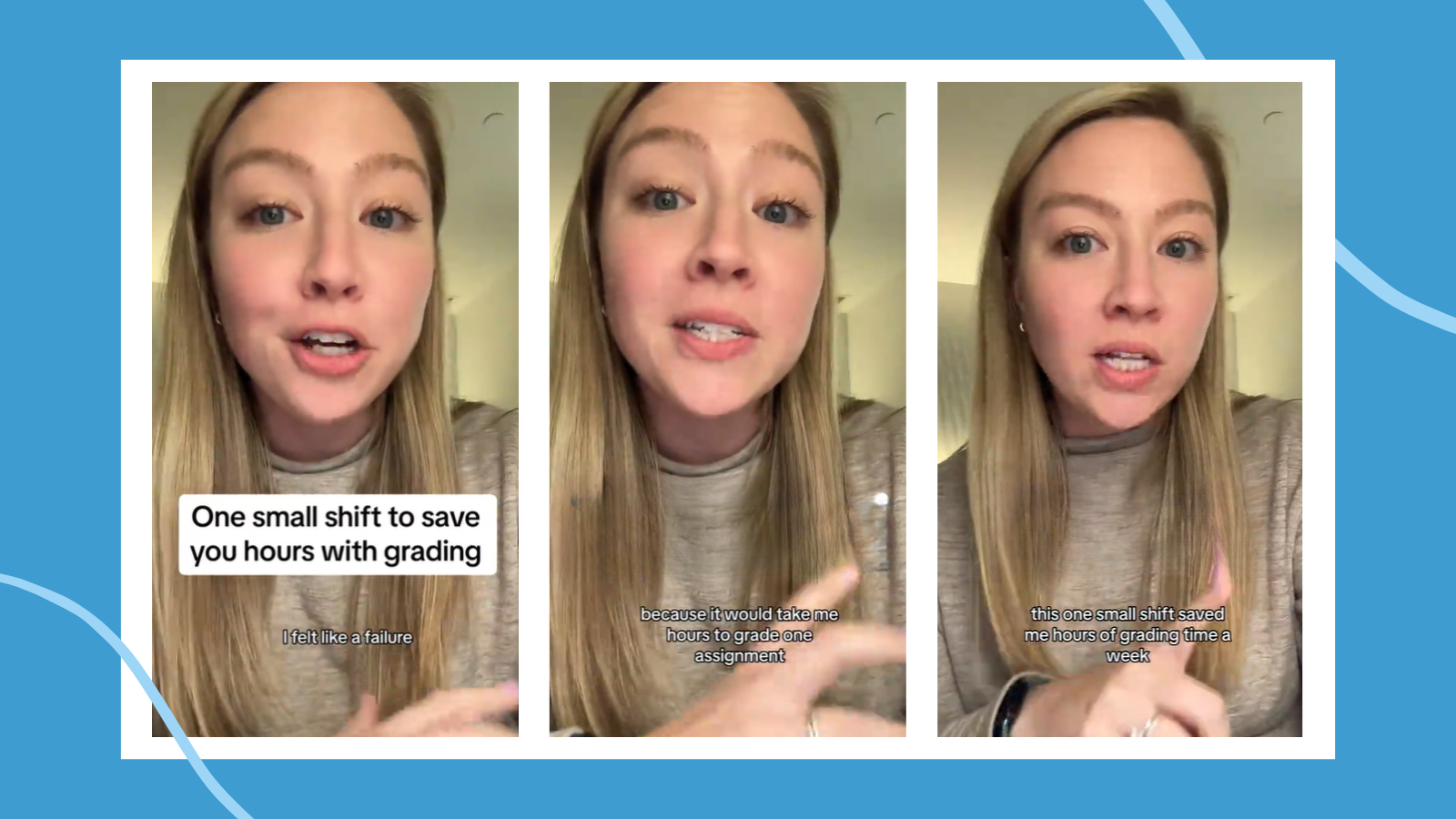As the clock ticked past midnight, I couldn’t help but fret and think about all my fellow co-teachers still surrounded by a sea of papers in their grading marathons. Every teacher has been there—at the mercy of endless assignments waiting for the final grading verdict. I found myself there once, too, but thankfully I received advice on a shift in feedback from a seasoned teacher like @strategicclassroom is advocating for. In the middle fo my first year of teaching, I suddenly got to a place where I was bringing home NO grading! Can you believe it?
This teacher assesses only selected questions for correctness while grading the rest of the assignment for completion.
Here’s why this works:
- Not everything needs to be graded. You don’t have to grade every part of every assignment.
- It balances between completion and correctness. So, why not just assign the questions you intend to grade? Often, students need practice, which a longer assignment offers. But do we need to grade students on practice? Many teachers would argue no.
- This method reduces grading time while ensuring students complete assignments thoroughly.
- Students not knowing which questions will be assessed keeps them engaged with the entire assignment.
- It provides the opportunity for students to self-assess. Provide students with an answer key to self-check the parts not graded for correctness.
- This approach allows you to give quicker feedback, enhancing student learning and maintaining the quality of assessment.
Listen to why @strategicclassroom uses this small shift in feedback for her grading:
This approach aligns with a newer movement in standards-based grading where students take responsibility for their learning. However, many grading reformers criticize giving credit for completion. If you’re considering this hack and appreciate the concept, adapt it to fit your needs. Nonetheless, I recommend limiting completion points to avoid inflating grades and skewing the feedback on students’ formative progress regarding the standards.
In the comment section, some points were brought up that we’ve summarized here.
“I want so badly to leave 120 individual feedback notes!”
I agree. It was really hard to sit and grade the 120 assignments from each student, and not write out the exact step where each of them individually were messing up. I found better balance with this when I would list the top five or six “mess-ups” from that standard! We all have to set boundaries and limits somehow!
“Why are we providing assignments that have aspects we aren’t going to grade?”
I had this same thought as a teacher, too. I was really puzzled when one of my students was like, “Why am I doing 10 questions when you’re only going to grade 3 or 4 of them?” I didn’t really have anything good to come back with other than I wanted them to practice. But, I’ve heard from the flip side that if a student is doing a step wrong always, then they are just practicing something wrong for 10 whole problems. Food for thought!
“I really need this more laid out.”
I explained this approach to my coworkers like this: if there were ten problems, I might choose a simple “lay-up” question, an intermediate one, a challenging problem, and a word problem to grade. I would only assess the steps and answers of these four problems and then discuss them with the class. One year, while students tackled their bell-work—a weekly spiral assessment—I would spot check just one question from their five-problem homework. After the spiral work time, I’d redistribute the papers, and we would collectively discuss our mistakes, how to address them, and go over any necessary reteaching. There are many ways teachers can implement this strategy; it’s all about finding what works best for us.
“Shouldn’t we just spot check the more dynamic problems?”
Yes! My husband also had this same shift in feedback in his classroom. At class end, they’d collaboratively tackle practice exercises, ironing out issues before assigning dynamic four or five-word problems. These word problems and higher-level Bloom’s taxonomy questions were the only ones students were responsible for in homework.
“This is another great way to drive how we reteach!”
Of course! We like formative assessments as teachers so much because it guides our teaching! We are able to do this with this shift in feedback without spending so many hours grading every problem. If most students only solve one of four spot-check problems correctly, it’s clear we need to reteach some concepts.
This small shift in grading can change both the teaching and learning experience. It lessens educators’ grading burden and boosts students’ learning by prioritizing critical thinking over mere rote accuracy. As we refine our teaching methods, adopting these hacks not only manages our workload but also enhances our educational impact. So, what do you think?

